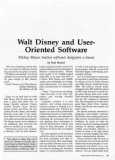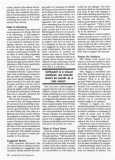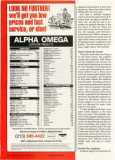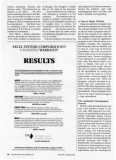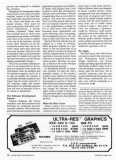Today we can look back on what Walt Disney did 50 years ago and learn a great deal about how to design friendly software. Disney created Donald Duck, Mickey Mouse, Goofy, and Pluto. He also created Pinocchio, Bambi, and Fantasia. Forty-five years after it was made, Snow White and the Seven Dwarfs was a box-office success this past summer. The Disney movies were a delight of our childhood; they still have the power to enchant us as adults.
Walt Disney used a new medium to develop a new art form (feature-length animated movies) and in the process rediscovered the principles of effective communication. Twenty years earlier, D. W. Griffith helped make film an art form with Birth of a Nation. Both Disney and Griffith seized a new technology; in so doing, each rediscovered, or at least reapplied, fundamentals of communication.
“What,” I am sure you are asking, does that have to do with computers and writing friendly software?”
Computer software is a new medium, and writing easy-to-use software consists of treating it as a communications task. Software designers can learn from professional communicators such as writers, filmmakers, advertisers, and salesmen by examining the techniques they use and applying these techniques to software development. Visicalc uses many of these principles, as does Wordstar, the Xerox Star, and Apple’s Lisa.
My main objective in the book from which this article is taken is to identify these principles and offer examples from prose, film, advertising, and successful software such as Visicalc and Wordstar. Software writers can learn by studying the formative stages of a communication art form as well as the principles used in its mature stages. After all, we are in the formative stages of developing useroriented software.
As I was finishing the manuscript for my book, I read Disney Animation, the Illusion of Life by Frank Thomas and Ollie Johnson (Abbeville Press, 1981). The authors, Disney studio animators from 1935 until they retired in 1978, wrote this book to record how the great Disney films were made. They describe the thought processes that go into creating an animated film, the atmosphere in which those great films (Snow White, Fantasia, Bambi, and others) were created, and much more.
For anyone seriously interested in designing user-oriented software, this book is must reading because it tells you how to think about communications. So much of what the authors say about creating animated cartoons is directly applicable to writing user-oriented software; a review of some of its high points serves to provide insights into what makes communication effective.
[…]
